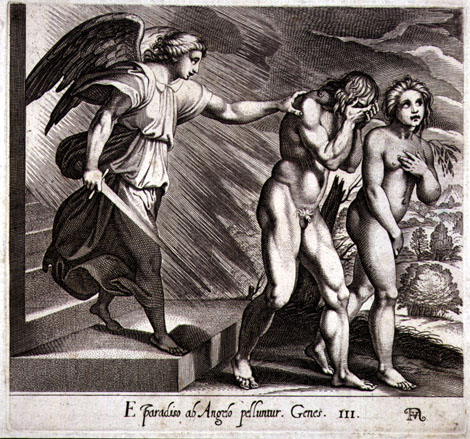This analysis of Elizabeth Bishop’s “First Death in Nova Scotia” is divided into three parts – context, rhyme scheme and rhetorical devices, and themes.
Context: This poem was first published in 1965 as part of Elizabeth Bishop’s poetry collection entitled Questions of Travel. It was also later included in her collection entitled The Complete Poems, which was published four years later.
This poem is autobiographical. As mentioned in the poem summary, Bishop lived with her maternal grandparents in Nova Scotia when she was still a toddler. At that time, she had no experience of death, for her father had died before she could come to any comprehensive understanding of what death is. However, she was a little older when her cousin Arthur died, and his death occasioned a variety of thoughts in her.
When Bishop wrote this poem, she was obviously not a toddler anymore. Yet, she can easily access the child’s psychology, who has attended a wake for the first time. That is what makes this poem such a remarkable one.
Rhyme Scheme and Rhetorical Devices: The poet does not follow any identifiable rhyme scheme in this poem.
In the 2nd and 4th stanzas, the poet uses the device of personification. This rhetorical device is used to bestow human qualities on something that is not human. For example, iFor example, in the 2nd stanza, the poet personifies the loon bird by imagining that it could speak and, in fact, offer wise advice to all its fellows before her uncle shot it. In the 4th stanza, the poet personifies the cold weather of Nova Scotia in the form of a figure known as Jack Frost, who paints both the maple leaves and the poet’s cousin Arthur in an incomplete manner.
In the 2nd and 3rd stanzas, the poet uses the device of metaphor as well. This rhetorical device is used when a covert comparison is made between two different things or ideas. For example, in lines 5 and 6of the 2nd stanza, the poet compares the table made of marble with a lake that is covered in ice. In line 9 of the 2nd stanza, she compares the bloodshot eyes of the loon bird with red-colored glass that serves as an ornament and is, therefore, much desired by women. In line 8 of the 3rd stanza, the poet compares Arthur’s coffin with a frosted chocolate cake.
In lines 2 and 3 of the 4th stanza, the poet uses the device of simile. This rhetorical device is used when an overt comparison is made between two different things. Here the poet compares Arthur with a doll that hasn’t been painted yet and also uses the word “like” while making this comparison.
First Death in Nova Scotia Themes
Representation of Nova Scotia: The landscape and environment of Nova Scotia is represented very accurately in this poem. The loon bird is a Nova Scotia, and hunting the bird a national pastime. Hence, a stuffed loon is a common item to be seen in households over there. Frozen lakes are also commonly seen there, so the child is not wrong in imagining such a lake as the loon bird’s natural habitat. Personifying the frosty weather conditions of the region is a stroke of genius. Snowed-in roads are a direct result of that frost. Hence, it seems the poet has internalized the scenery of this region that is so integrally connected with her childhood.
Colonial remnants: “Nova Scotia” in Latin means “New Scotland.” As the name suggests, this province of Canada was, in fact, a British settler colony. British families such as Bishop’s family had emigrated there in the 19th century and established settlements. In an attempt to stay in touch with their roots, these settler families often decorated their houses with illustrations of British royalty. The colonial aspect of the region also colors the poet’s imagination when she imagines what kind of afterlife her dead cousin might have. The grandest kind she can imagine involves becoming a concrete part of the British royal court.
Contrasts: In this poem, the poet contrasts the fantasy of the afterlife with the cruel reality of death and the warmth of England with the frost of Nova Scotia. In the afterlife, if Arthur were to become a part of the British royal court, his life would be filled with glory and cheerful celebration. However, in death, both Arthur and the loon bird have become silent and dreary. Life in England would have been beautiful and sunny. However, in Nova Scotia, it is winter and snow all year round.
Use of color: Red and white are colors that the poet associates both with life and death. The British royals represent life, even though they are not physically present. The image of their clothes as made of red velvet and white ermine fur evokes a feeling of comfortable warmth and luxury. On the other hand, the loon and Arthur represent death, their bodies being put up for public display. The loon’s eyes are red, as is Arthur’s hair. On the other hand, the loon’s table is white, as is Arthur’s dead body. Both red and white become chilling colors here. They are stark and represent the only remnants of a short life passing into death. Thus, we can easily say that Bishop’s use of color is both complex and interesting.
Some online learning platforms provide certifications, while others are designed to simply grow your skills in your personal and professional life. Including Masterclass and Coursera, here are our recommendations for the best online learning platforms you can sign up for today.
The 7 Best Online Learning Platforms of 2022
- Best Overall: Coursera
- Best for Niche Topics: Udemy
- Best for Creative Fields: Skillshare
- Best for Celebrity Lessons: MasterClass
- Best for STEM: EdX
- Best for Career Building: Udacity
- Best for Data Learning: Pluralsight
















